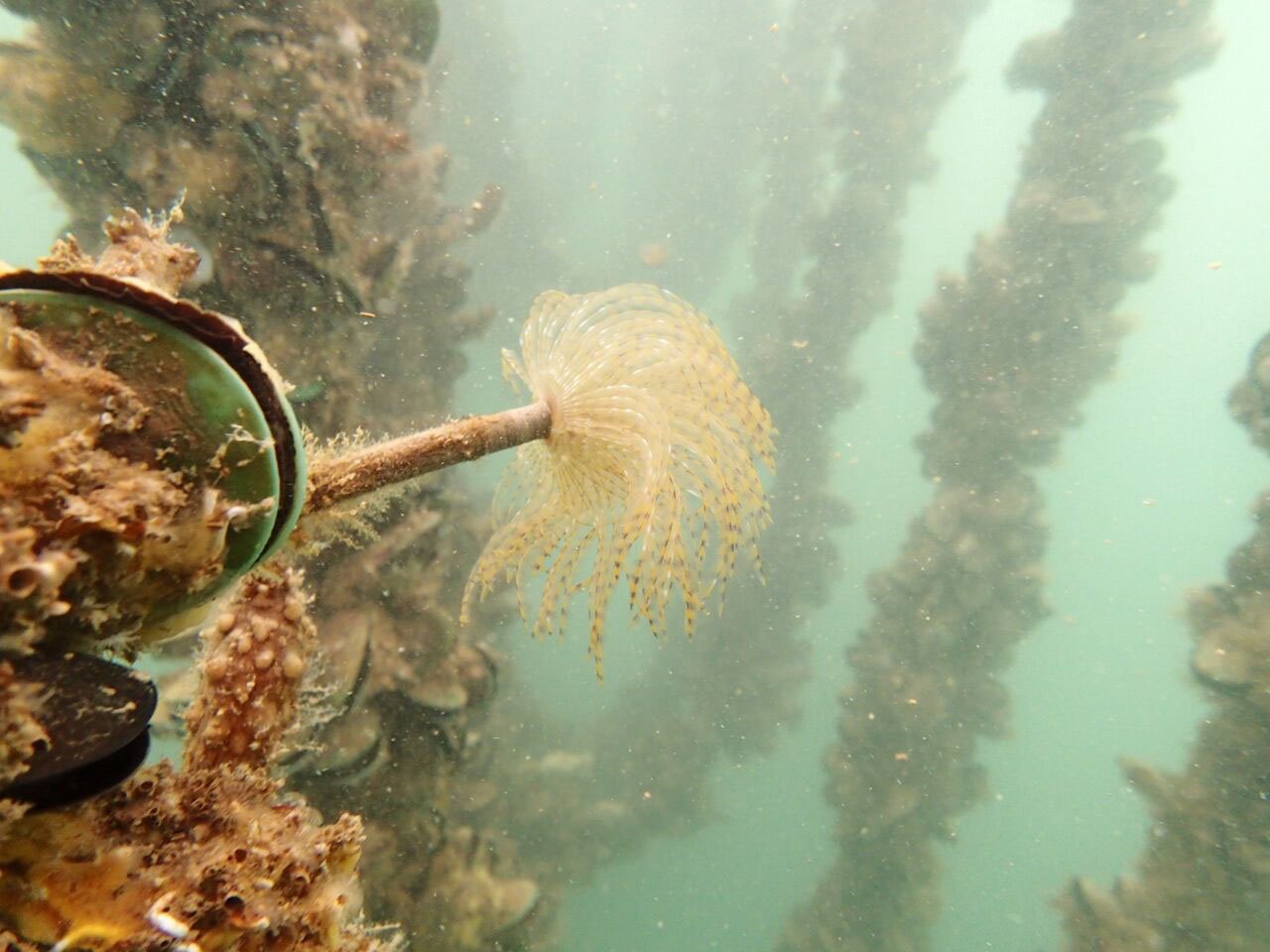Mediterranean fanworm found and quickly removed at Pilot Bay
The discovery of 81 Mediterranean fanworm (Sabella spallanzanii) on the sea floor in Pilot Bay was not the early Christmas present that the Bay of Plenty Regional Council dive team were wanting.
Biosecurity Officer, Andy Wills explains that after being notified of the location of a single fanworm, Council Biosecurity divers searched the area and subsequently discovered multiple fanworm scattered in the same locality.
“The team have completed over 15 hours of underwater surveillance and removal in the area. Each fanworm must be carefully bagged, dug out and removed.”
“Given that Mediterranean fanworm have no natural predators in New Zealand, they can form dense beds of up to 1,000 per square metre and compete against native filter-feeders such as mussels, oysters and scallops for both food and space,” he said.
Mediterranean Fanworm can grow up to 80cm long and given the ones found were all similar size and close to each other, it indicates they had most likely been scrapped from the hull of a boat. Mr Wills highlighted how disappointing it is that one boatie could have caused such an issue. If they had simply hauled their boat out and had it cleaned this wouldn’t have been an issue.
“We survey over 3,039 hulls across the region every year to ensure that unlike other parts of the country, Mediterranean fanworm does not become established in the Bay of Plenty.”
“With the constant threat of pests like Mediterranean fanworm and Asian paddle crab on our marine doorstep and new ones like the exotic seaweed Caulerpa, it’s more important than ever people keep their boats and equipment free of pests,” Mr Wills concluded.
Further surveillance will be carried out to remove every fanworm from the area. If you spot Mediterranean fanworm in the Bay of Plenty, please note the location and contact the Bay of Plenty Regional Council on 0800 STOP PESTS (0800 786 773).
Mediterranean fanworm is listed as a Progressive containment pest in the Bay of Plenty Regional Pest Management Plan (RPMP) 2020-2030, being first detected in New Zealand in 2008.
Figure 1: One of the Mediterranean fanworm found on the sea floor in Pilot Bay.
Figure 2: Distribution of Mediterranean fanworm removed from Pilot Bay.
Figure 3: Mediterranean fanworm ejected from tube.
Originally published on the Bay of Plenty Regional Council website




